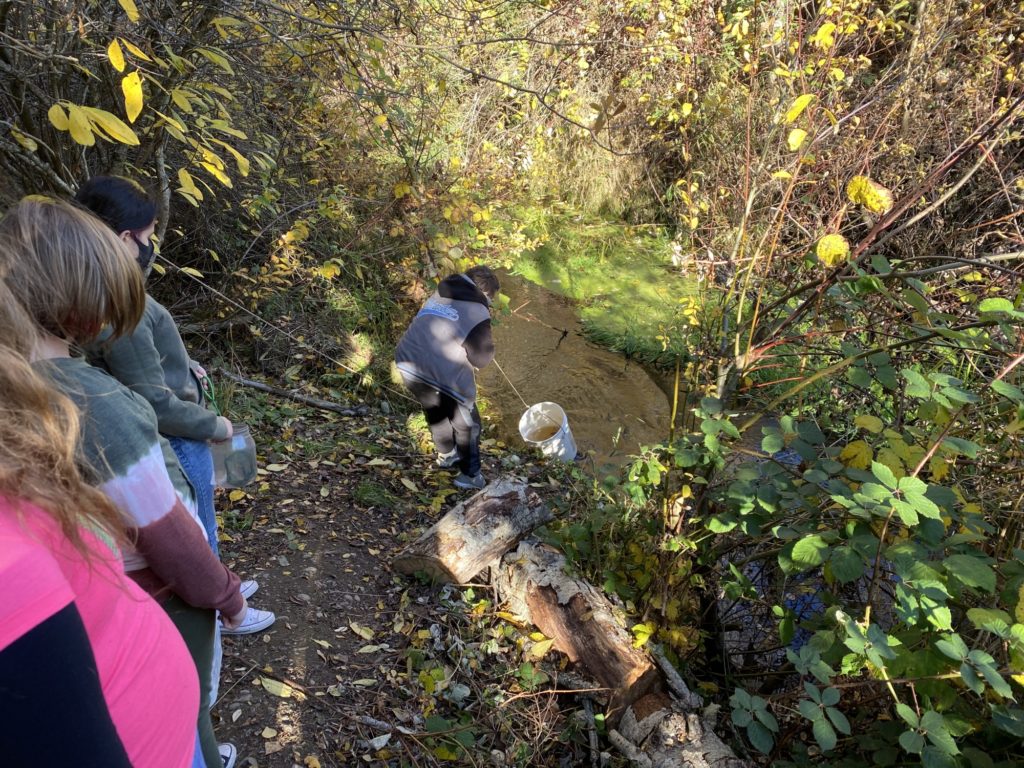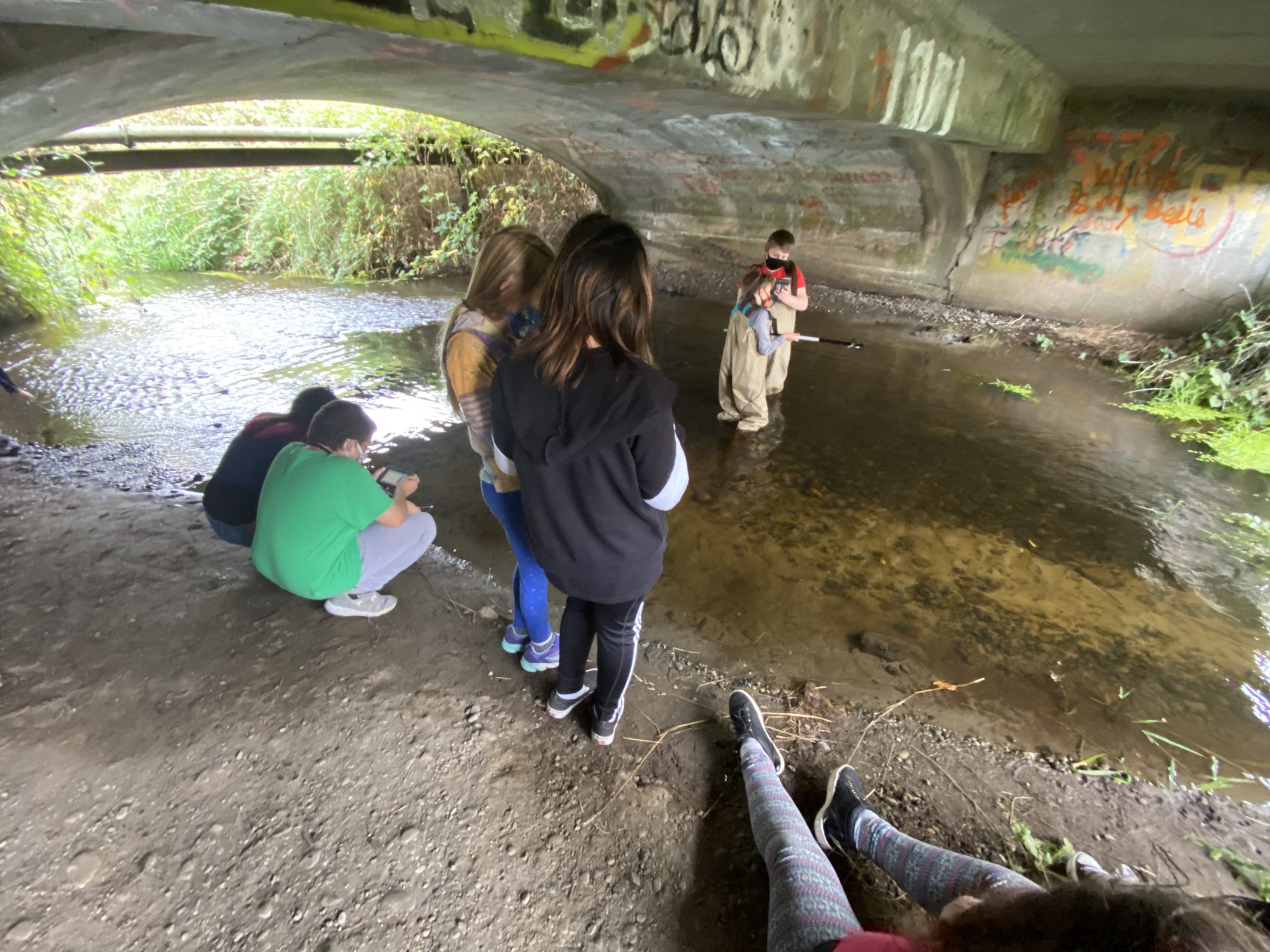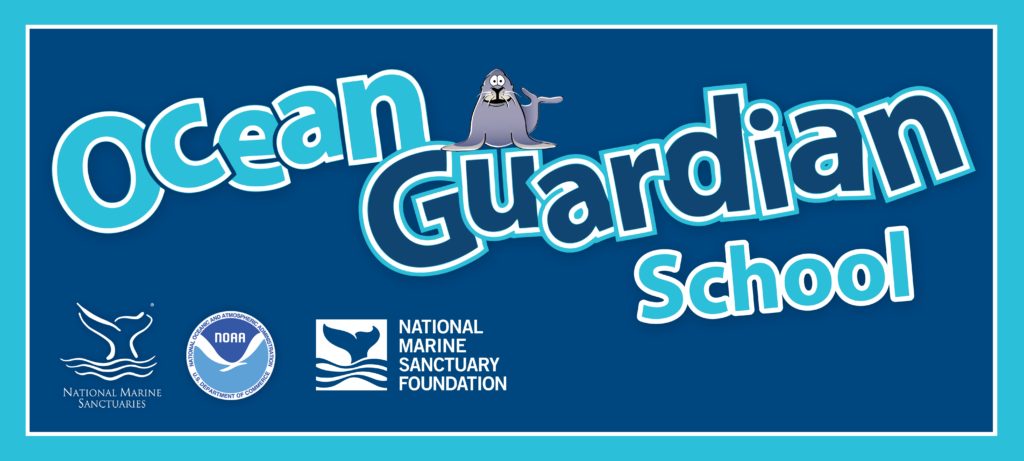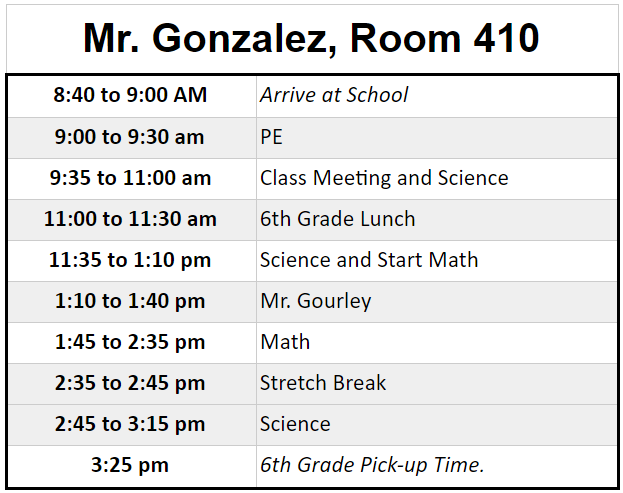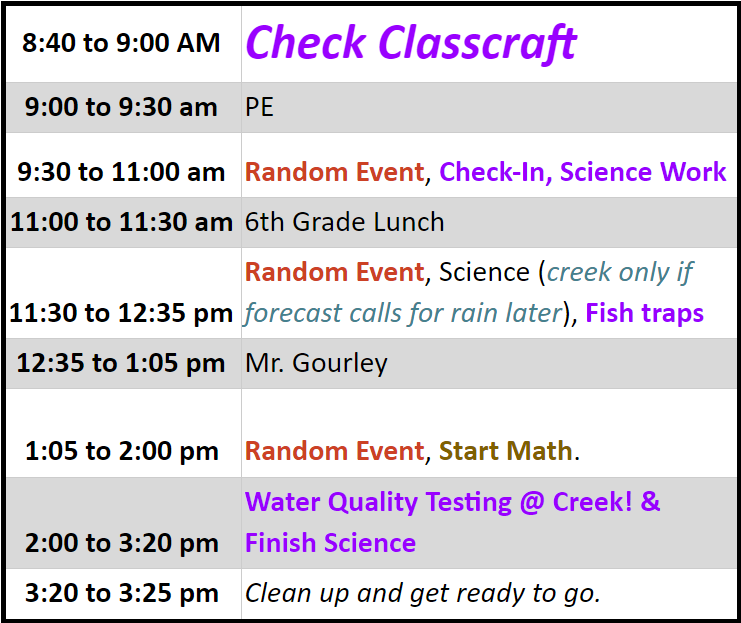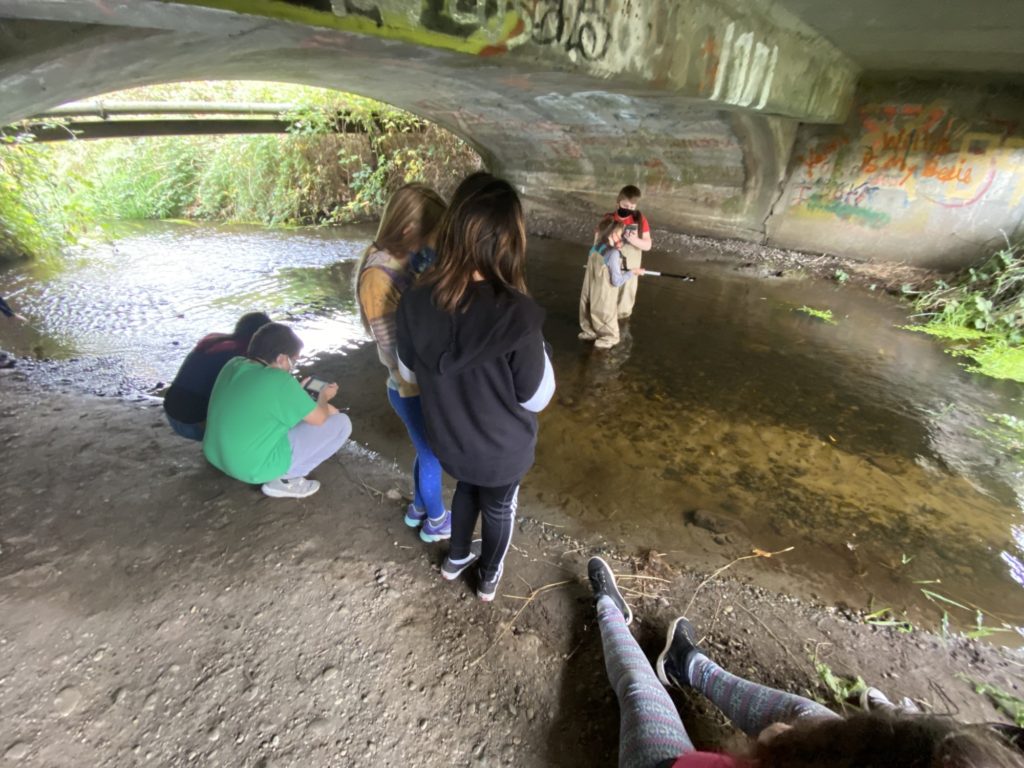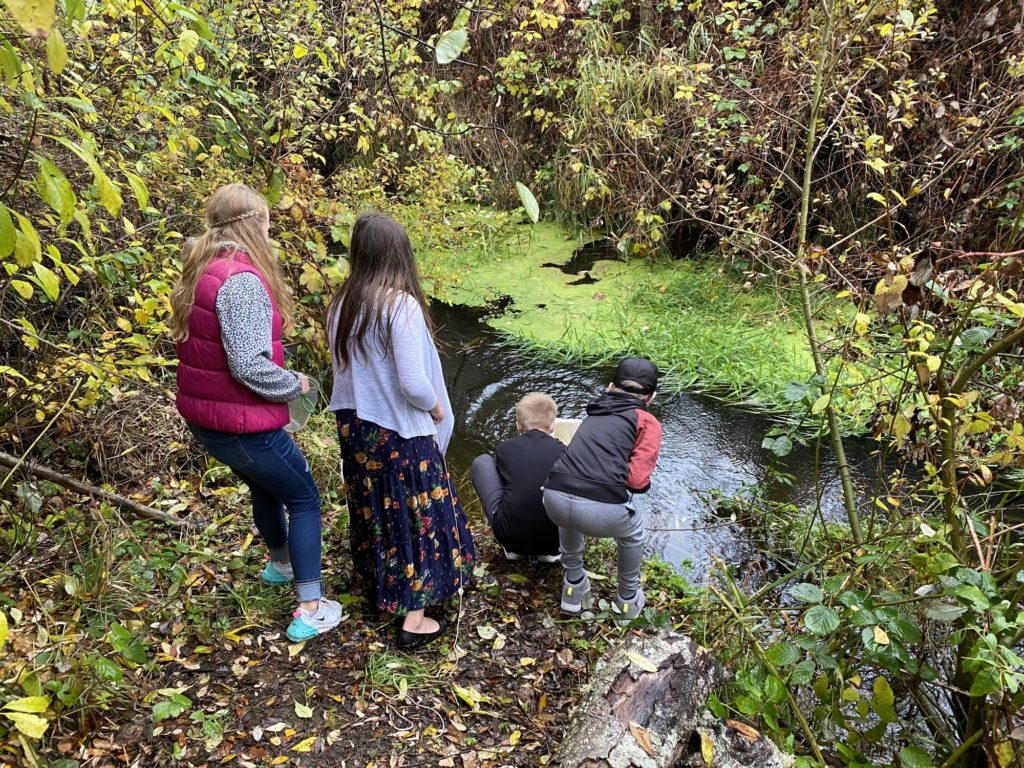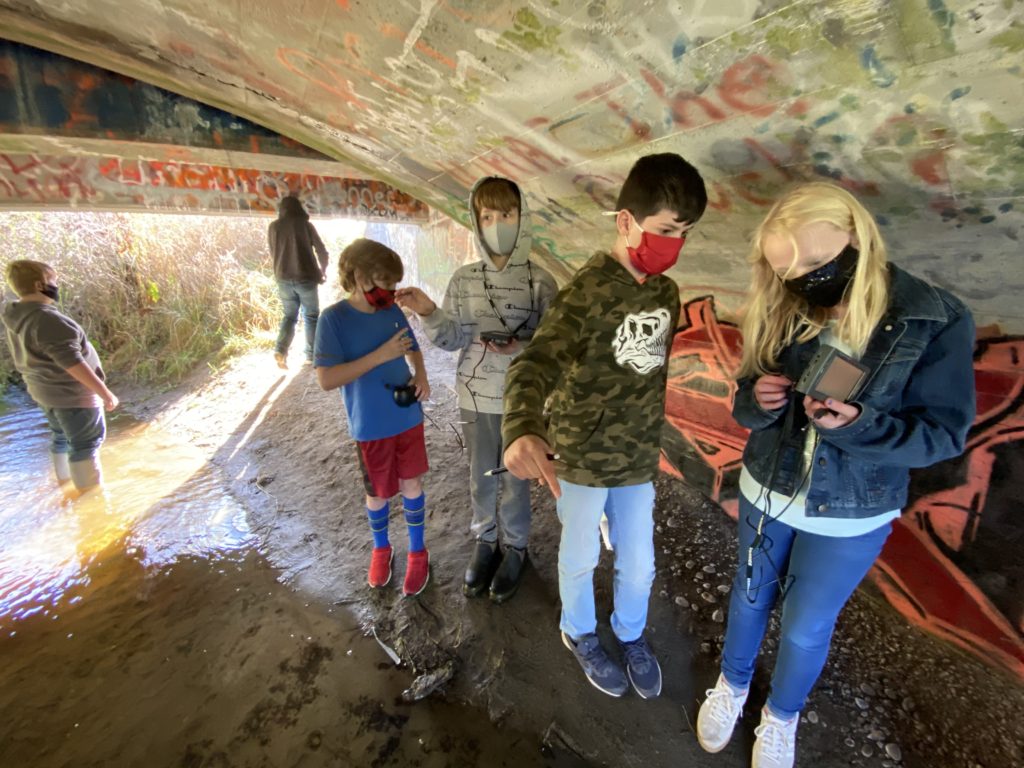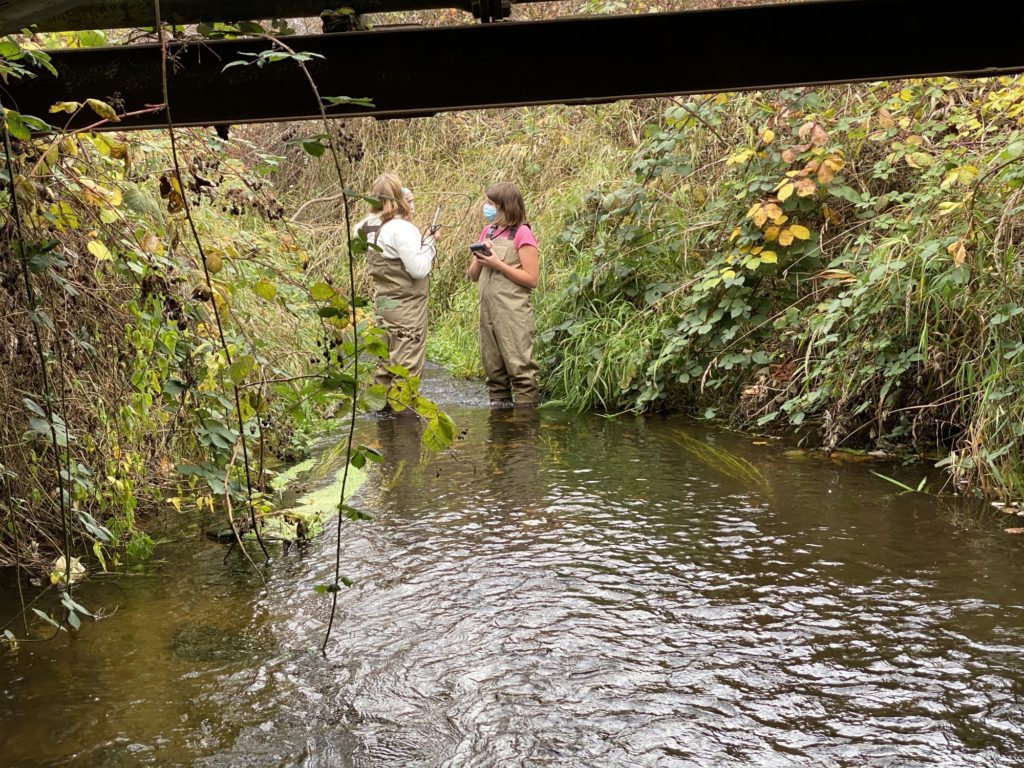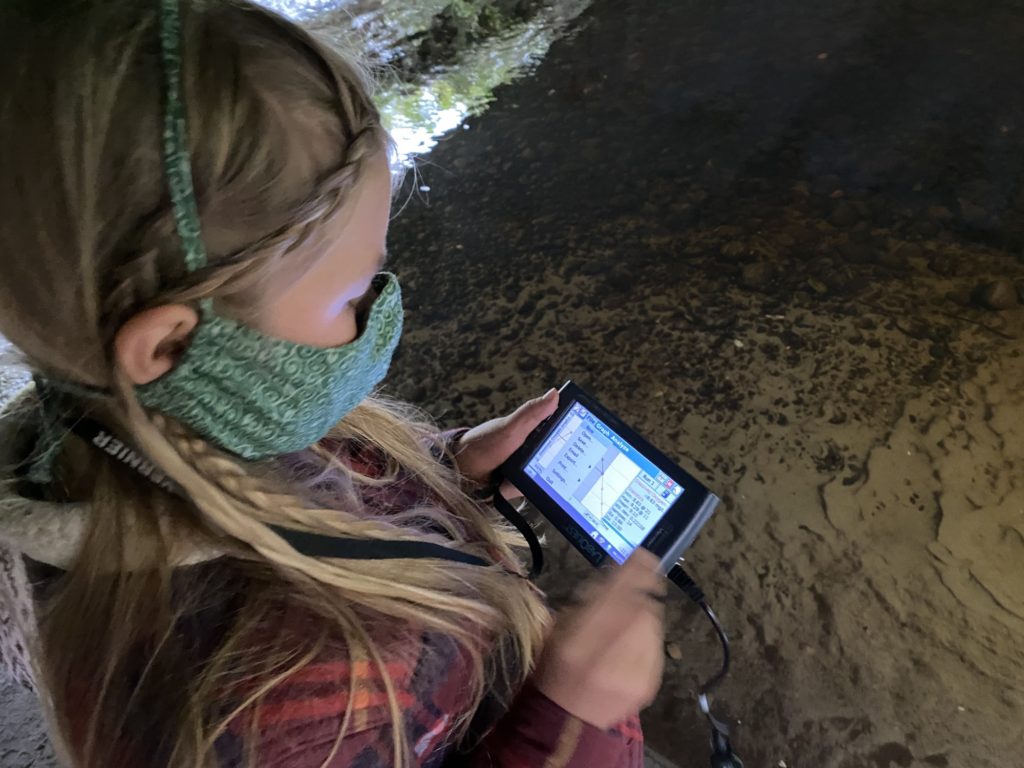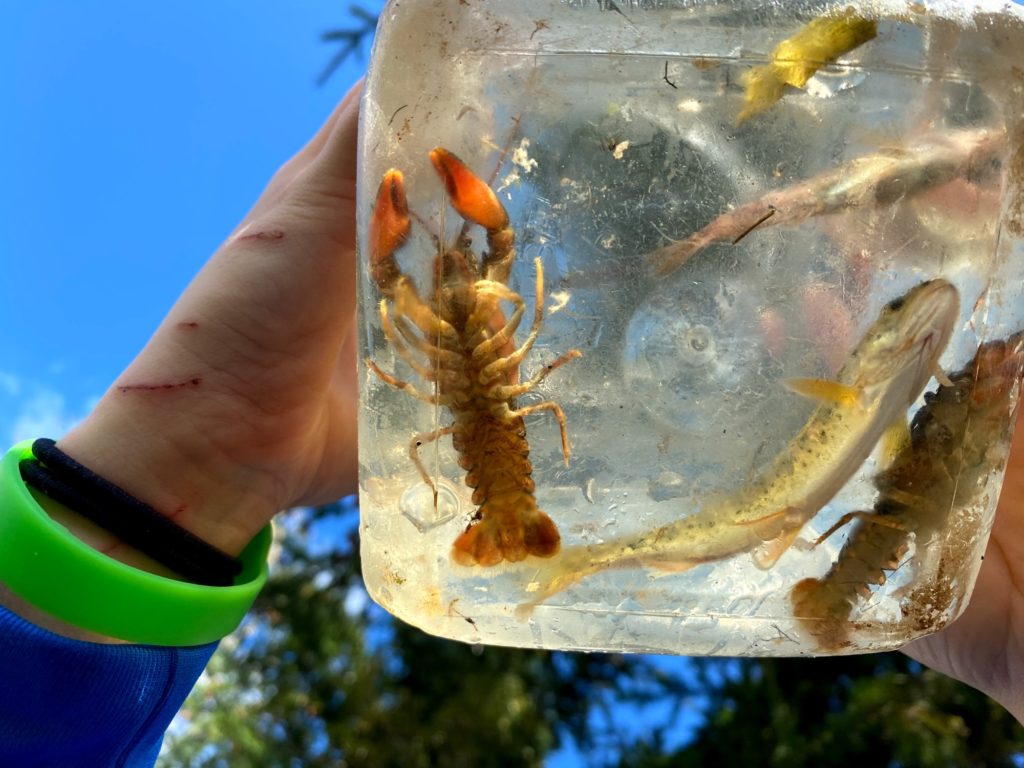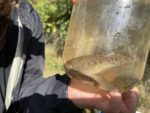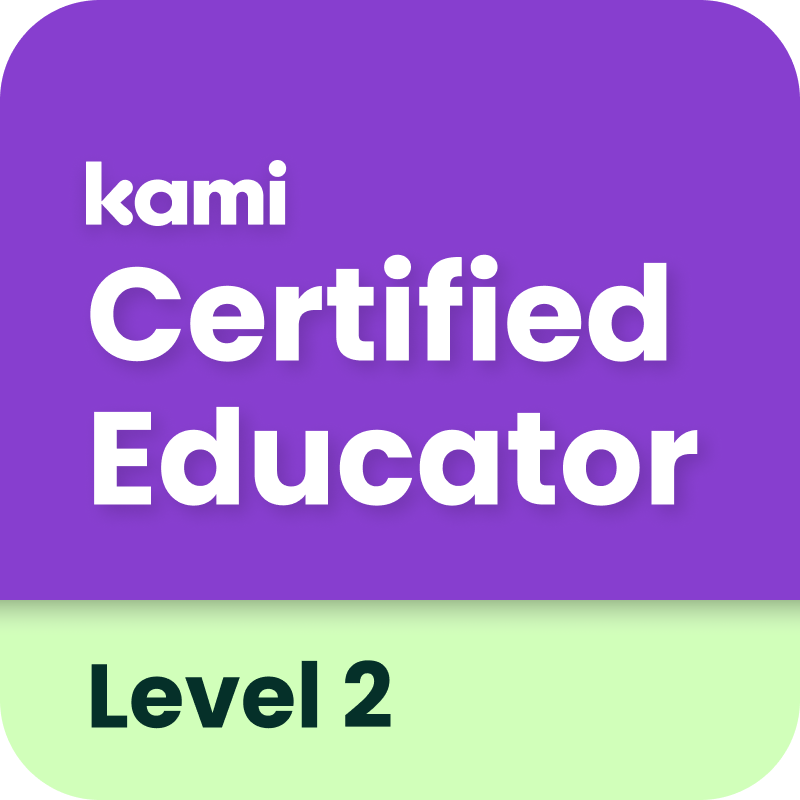The first week of school I sent home all my Ocean Guardian School project information, permission slips, and photo release forms. Once I got all the permission slips, which I had to have them all because I could not send kids anywhere while the rest of us left the room, I was able to start my Environmental Stewardship Project. Normally this project is a spring project but after having kids miss out on most of the activities this past spring, I wasn’t going to let another group miss out! That and giving kids a chance to not only move, but get outside and do some meaningful, real-world field science allowed me to make sure kids weren’t sitting all day!
My daily schedule went from this:
To this:
We started with water quality testing, which was the reason I needed field trip permission slips. Even though our creek runs right by our campus, the only way to get to the space where we could access the creek with a whole class of students is by exiting the campus and walking about 500 yards or so to the creek location. It’s safer to have signed field trip permission slips for each child just to be safe when walking outside our campus.
We then were able to add fish trapping once the North Olympic Salmon Coalition crew were able to get out to the trapping location to clear it up for us. This year a tree fell right along the path we take!
I took advantage of every day the weather was even remotely decent and got my 6th graders outdoors. Taking the walk to the creek was a fun and exciting break from sitting and working on our laptops in the classroom. This year we collected more water quality data than ever! Fish trapping wasn’t enough so I plan to continue setting and checking traps when we can safely return to a hybrid schedule.
Here are some photos showing some of our trips down to the creek to collect dissolved oxygen, temperature, pH, turbidity, conductivity, and flow rate to calculate stream flow:
Here are some photos of 6th graders setting and checking fish traps. We identify and count the fish caught in our traps and send the data to the Jefferson Conservation District:

